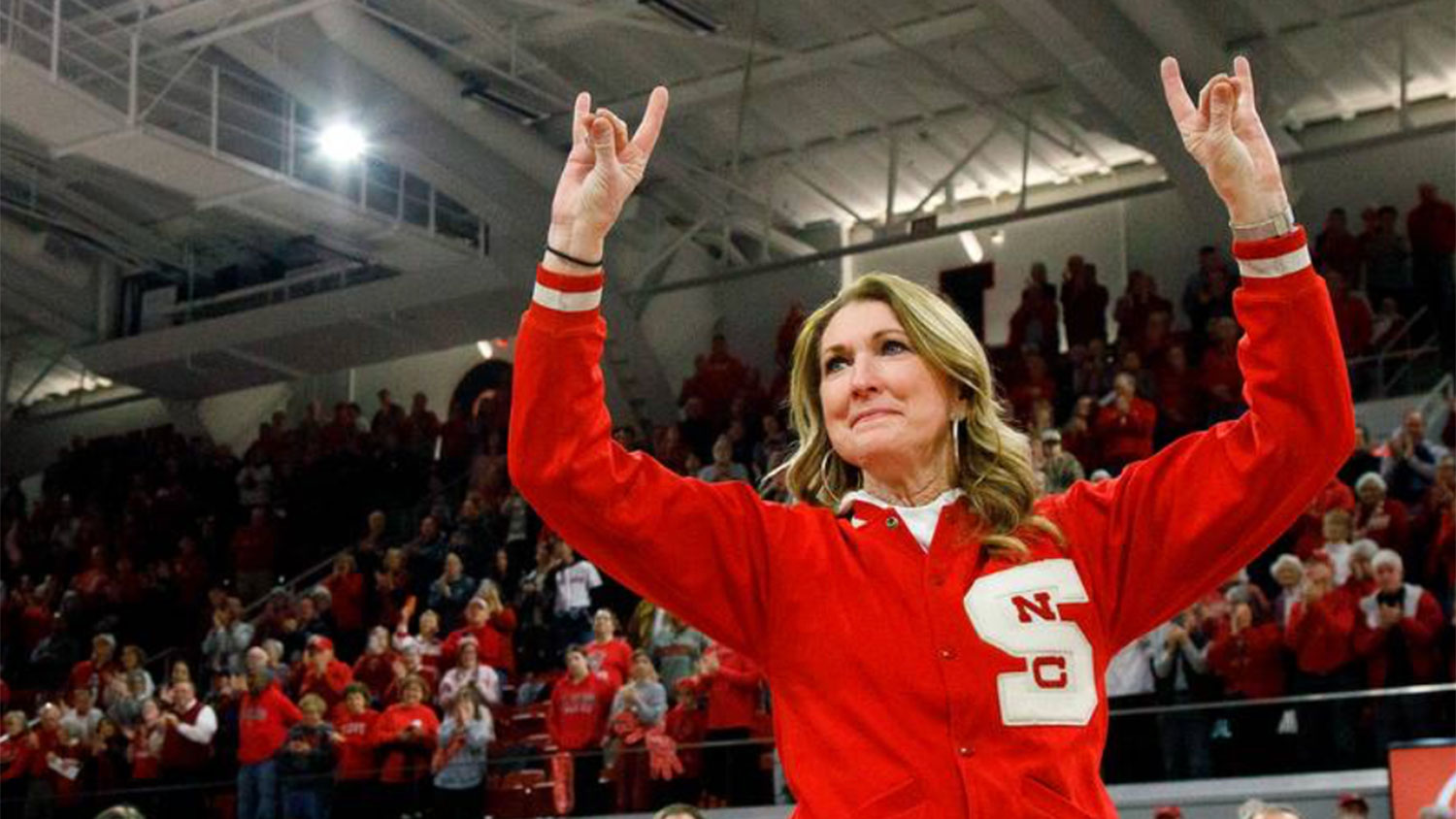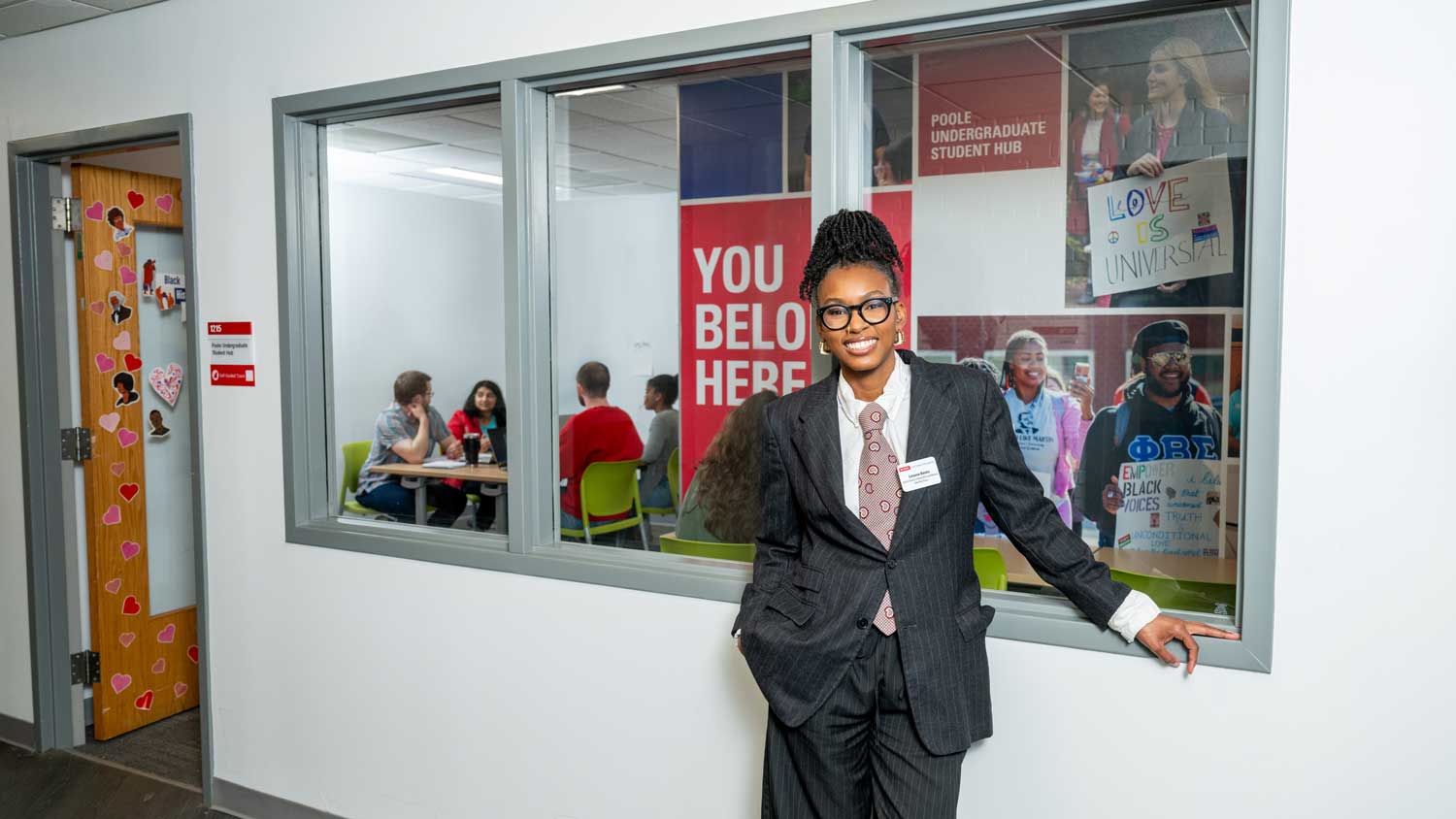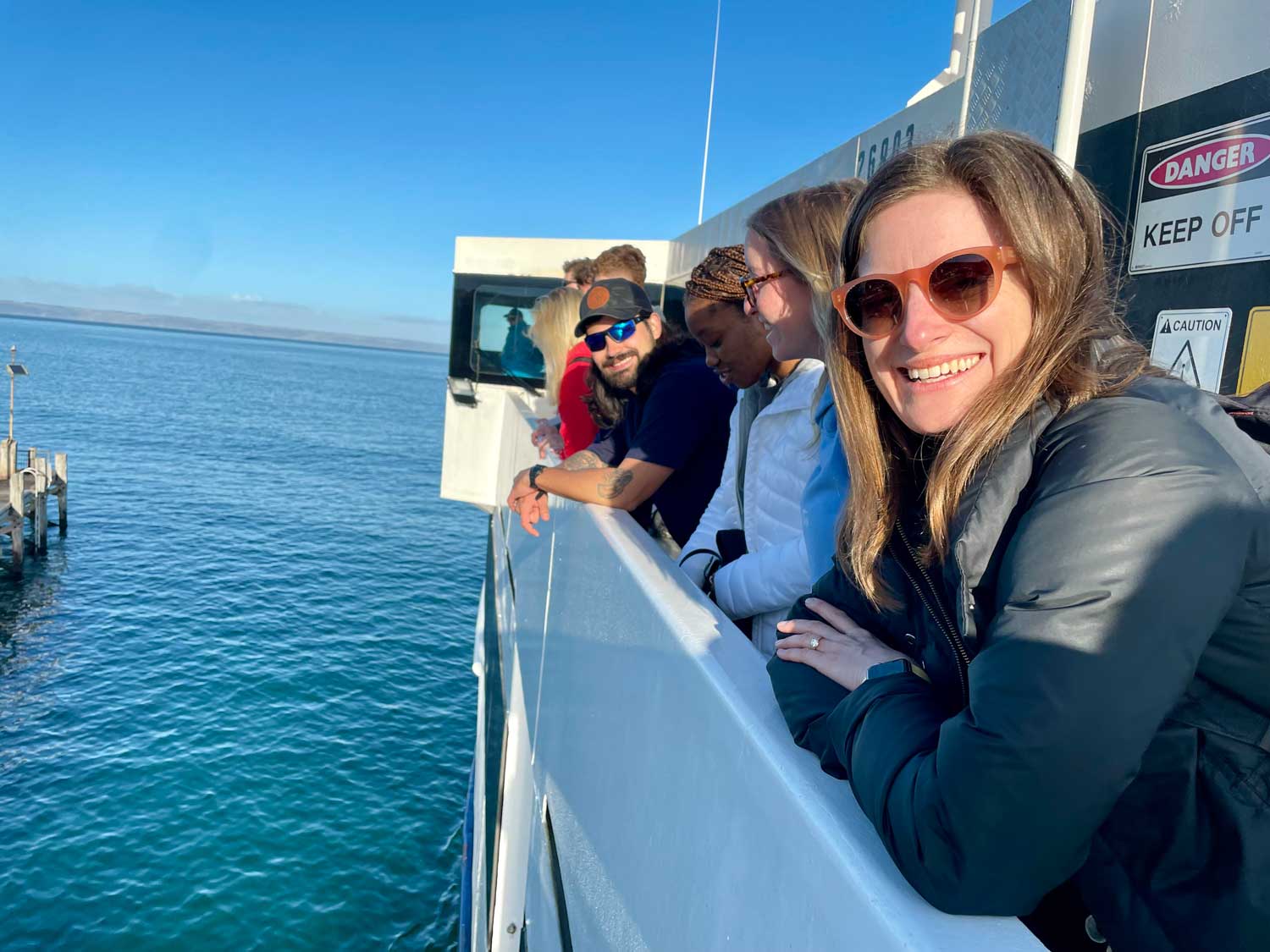
Executive Pitch
Students in Professor Mike Stanko's MBA 560 class pitch solutions to real-world challenges in “live case studies.”
Every seat in Nelson Hall 1120 is filled with MBA students when Mike Forman arrives on a bright October afternoon to discuss one of his favorite topics: the Carolina Hurricanes. Forman spent more than a decade with the National Hockey League team, guiding its marketing efforts from late 2013 to July 2024. Some of these were tough years, plagued by disappointing attendance, a playoff drought and financial losses.
Forman attended MBA 560, Marketing Management and Strategy, at the invitation of Mike Stanko, the course’s instructor and a professor of marketing in the Poole College of Management.
Stanko has written a case study of the Hurricanes designed to challenge the MBA students. He has tasked them with putting on Forman’s marketing executive hat for the afternoon. It’s their job to analyze the case and recommend a strategy that a marketing manager like Forman could follow in solving a real-world problem.
It’s a complex endeavor. The real world is as slippery as the ice at the 19,000-seat Lenovo Center, where the Hurricanes play home games.
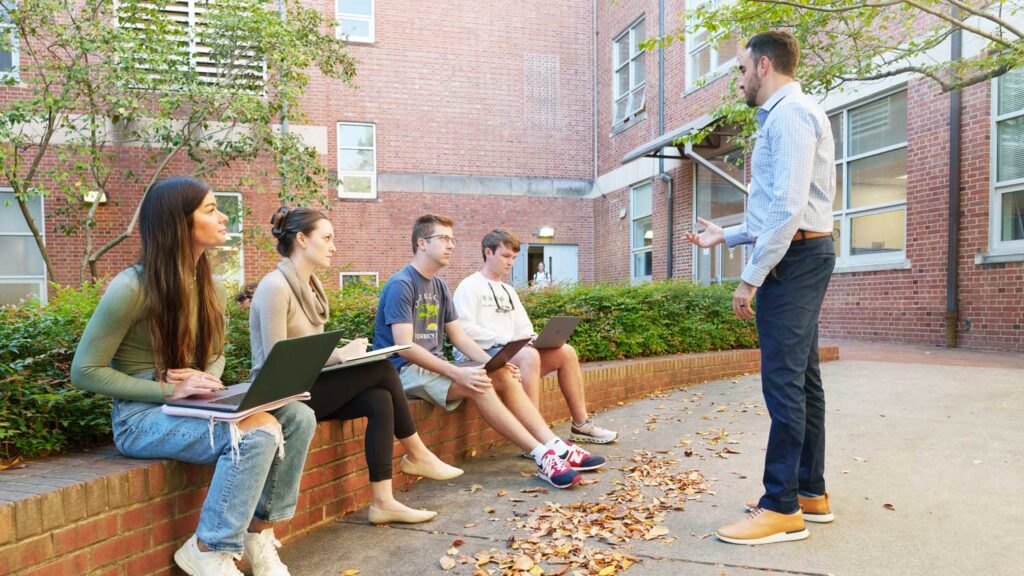

Forman was candid with Stanko when he sat down with the professor to discuss marketing the Hurricanes for the case study. Marketing, he pointed out, can’t turn around a losing season.
“You are working [hard] coming with all these strategies that try to almost distract people from what’s happening on the ice,” he explained. “And you have to overcompensate so much with creating different initiatives that bring the focus off the ice because you have no control over team performance.”
The case Stanko presents to the MBA students is a head-scratcher. He asks students to consider whether — and how — the Hurricanes could leverage the long-dormant Whalers brand to breathe new life into their marketing. As at least some of the students know, the Whalers, a New England hockey team formed in 1971, became the Carolina Hurricanes in 1997, when the team moved to North Carolina from Hartford, Connecticut.
The NHL has allowed several companies to sell Whalers products, including jerseys with the old team’s iconic logo — a whale tail rising from a stylized letter W — since 2009. Why not jump on the bandwagon, Stanko asks the students, and have the Hurricanes sell Whalers merchandise and even occasionally sport the retro Whalers’ jersey on the ice?
That question leads to others. How could using the Whalers branding impact the customer experience? Should the team focus on deepening its engagement with existing customers or make a play for new fans?
As the students dig into the finer points of measurable performance targets, customer engagement and brand awareness, I’m reminded of the first hockey game I attended as a youngster. I was one of 14,366 fans who attended the opening game at the Los Angeles Forum on Dec. 30, 1967; a game that saw the Philadelphia Flyers beat the hometown favorites, Jack Kent Cooke’s Los Angeles Kings, 2–0.
The loss didn’t bother me, I must admit. I was awed by the fast pace of the sport and by the aggressiveness of the play. Having sat through hours of leisurely paced baseball at Dodger Stadium, I was ready for some nonstop action. And hockey fit the bill.
One of the students channels my thinking.
Parker Clayton sees an opportunity for the Hurricanes to attract new fans by emphasizing its tailgating experience, which is like the tailgating tradition that has engaged NC State fans though lean years on the field. When we talk outside of class, Clayton dives deeper into his idea.
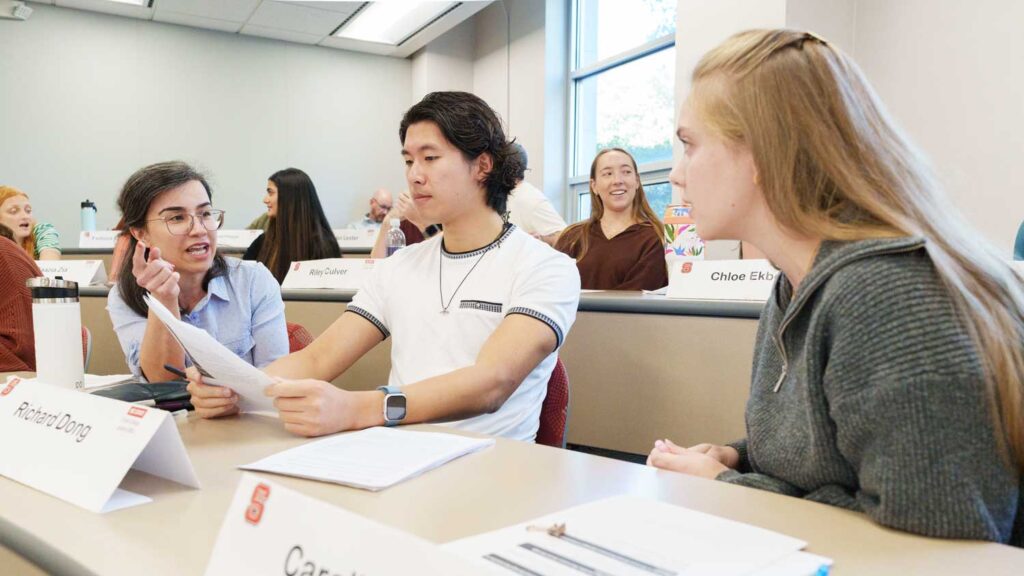

“Hockey is kind of like football where it’s fast paced and there are fights and everybody’s got a beer in their hand,” he says. “So, my take was to really emphasize the tailgating and the fun party atmosphere and bring in new hockey fans in the area that have no prior relationship to hockey at all.
“College students like me, some of us have never even heard of hockey. And now I have a Hurricanes jersey.”
Marketing may have changed in the five decades since I was a kid, driven by new tools like artificial intelligence and social media, but the power of hockey to hook new fans remains a fundamental force.
That aligns with Stanko’s teaching philosophy.
“There’s a tendency to think that trends today are completely different from trends of a few years ago,” he tells me after class. “But it’s important to take a longer-term perspective and not get too caught up in trends.”
“It’s important to take a longer-term perspective and not get too caught up in trends.”
—Mike Stanko, Professor of Marketing
His course covers the nuts and bolts of marketing strategy and management, from financial analysis and metrics to brand positioning and customer value creation. What makes the course highly engaging and highly challenging is that Stanko ties these fundamentals to a series of case studies, some of which he’s researched and written, like the Carolina Hurricane’s study. And he often invites the marketing executives he interviewed for the cases to attend class for what he calls a “live case study.”
Four executives agreed to participate in fall 2024, although Stanko typically has just one live case per semester.
With the marketing executive in the room, students face the kind of real-world pressure usually reserved for, well, the real world. After an intense discussion of the case study, students with the most promising ideas are organized into teams and sent into the hallway outside of the classroom to create quick presentations. When they return, the real work begins as they formally pitch their ideas to the marketing executive and field some tough questions from the guest and from their professor.
Stanko calls it a “low-stakes experience” that doesn’t impact the students’ grades much, while helping them hone their decision-making and presentation skills. But with the marketing executive in the room, the exercise still seems like a hockey game of sorts to me — polite but intensely competitive. That’s by design.
“I don’t know if the students would agree with me that it’s low stakes given that they want to impress their peers and impress the chief marketing officer in the room. But getting that experience with low-stakes decision-making is part of what we want to do with the case method,” Stanko explains. “You look at a case study and you recommend a course of action that might have some dire consequences. But it’s not a calamity [if the recommendation misses the mark]. I want them to make these decisions with the case method before they’re out there in industry making decisions in a high-stakes environment.”
“I want them to make these decisions with the case method before they’re out there in industry making decisions in a high-stakes environment.”
—Mike Stanko, Professor of Marketing
MBA 560 a two-credit course that meets twice a week for just eight weeks, an accelerated pace that challenges everyone — students and professor — to bring their best game to class. One of Stanko’s goals for the course, as well as one of his challenges, is to meet the needs of two distinct groups of students.
On the one hand, he has students concentrating in marketing, who aim to pursue a career in the field. They’re more likely to be familiar with the role of marketing in a business enterprise and to know their way around concepts like market segmentation, pricing and product development. A second, larger group is made up of students pursuing other concentrations such as supply chain management, analytics or entrepreneurship.
“I have to be open to these different groups of students and make the content interesting and relevant to both of them,” he says.
The course was an eye-opener for Clayton, who has a finance concentration. He was drawn to some of the analytical tools Stanko introduced, including a mathematical calculation for measuring customer lifetime value.
“That’s something I feel like I would use in my family business,” he says.
His family’s agriculture business, started by his grandfather in the 1950s in rural Chowan County, North Carolina, is sure to benefit from Clayton’s education and experience. In addition to his academic work in the MBA program, he plans to serve an internship with AgCarolina Farm Credit in Elizabeth City this summer, an opportunity that will allow him to gain real-world marketing experience close to home.
“ It was fun to sit in class and discuss all of these ideas and to see how everybody approached problems differently.”
—Parker Clayton, MBA student
He appreciated getting a gentle push out of his comfort zone in Stanko’s course. “Public speaking has always been an anxiety point for me,” he says, “But it was fun to sit in class and discuss all of these ideas and to see how everybody approached problems differently. It was beneficial for me to bounce my ideas off of other people.”
It’s not just students like Clayton who benefit from the live case studies, Stanko says.
“Every now and then, a visiting executive will listen to a student’s idea and then say, ‘I could have faced this problem a thousand times and I never would have thought of that possible solution.’”
–Mike Stanko, Professor of Marketing
“Every now and then,” he says, “a visiting executive will listen to a student’s idea and then say, ‘I could have faced this problem a thousand times and I never would have thought of that possible solution.’
“That is wonderfully valuable for them.”
More from Poole Business: Spring 2025
See all in current issue- Categories:

